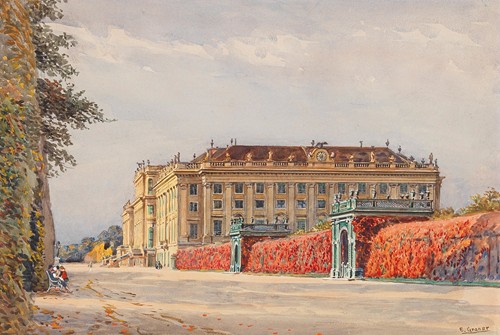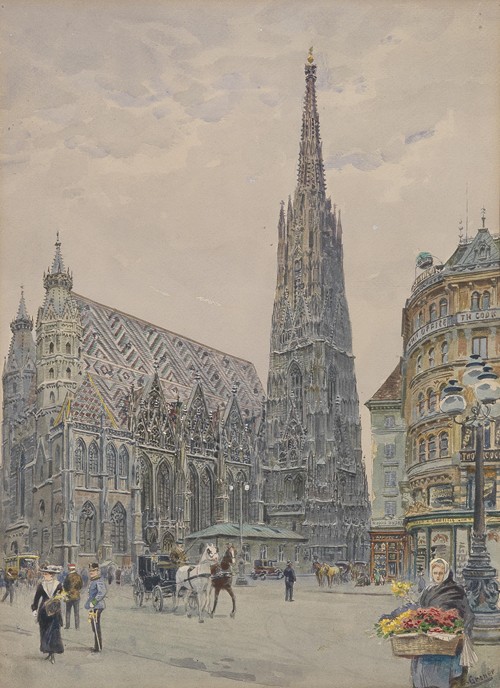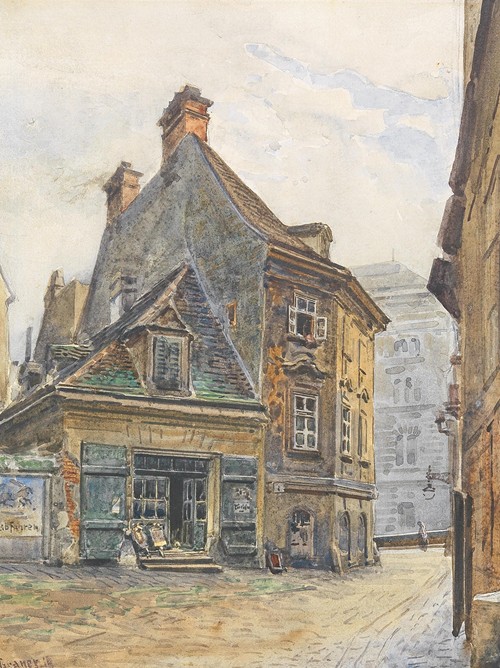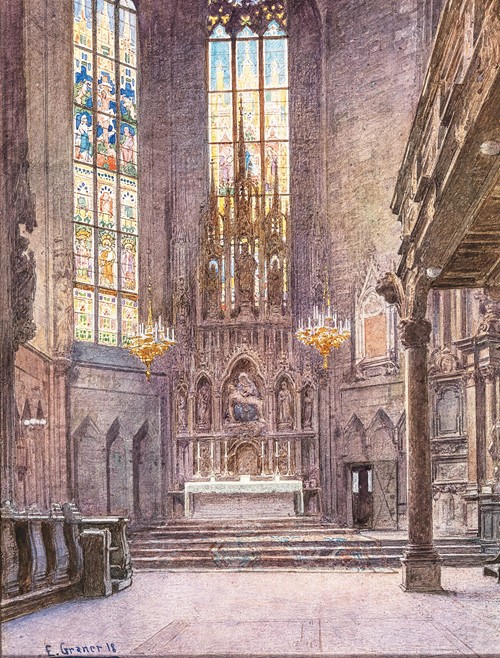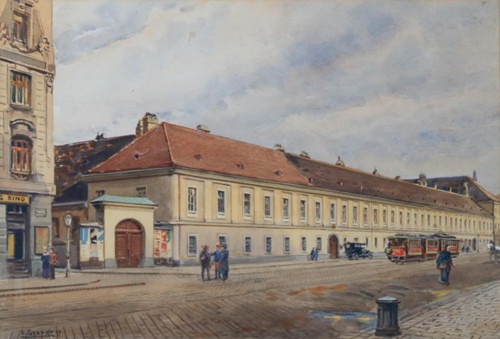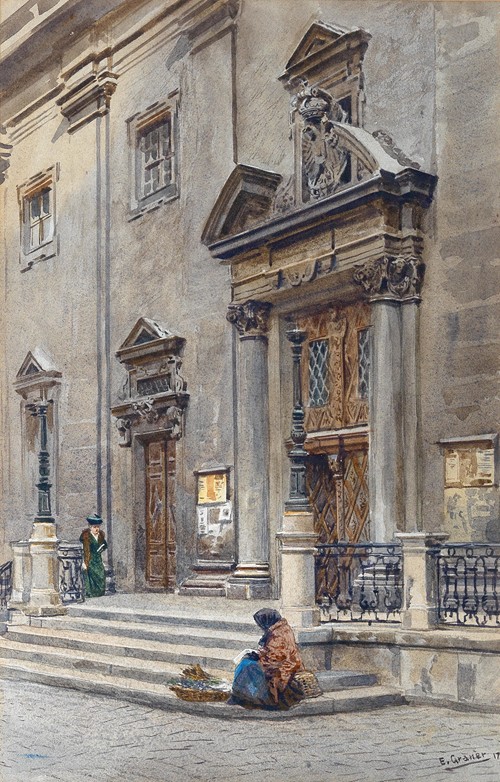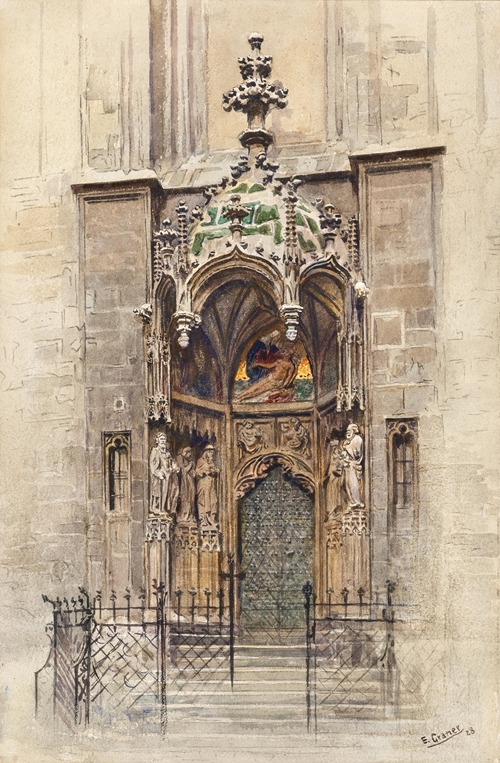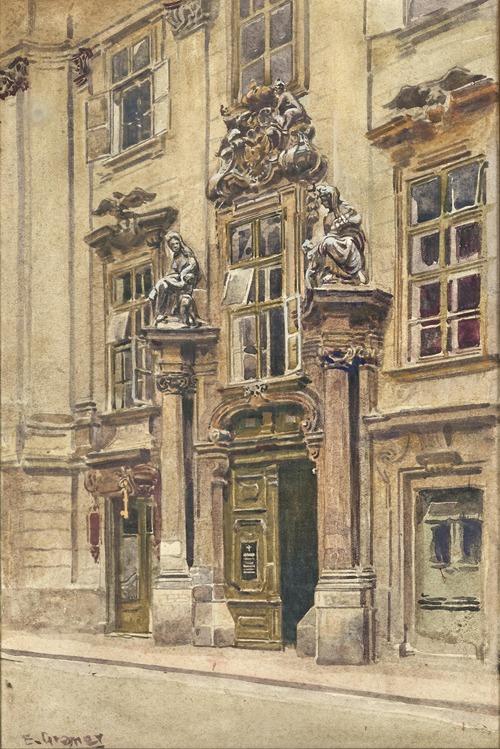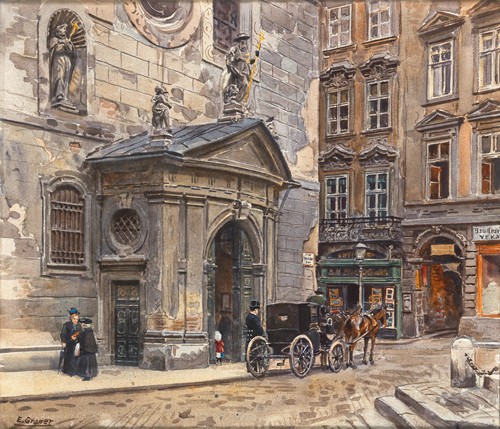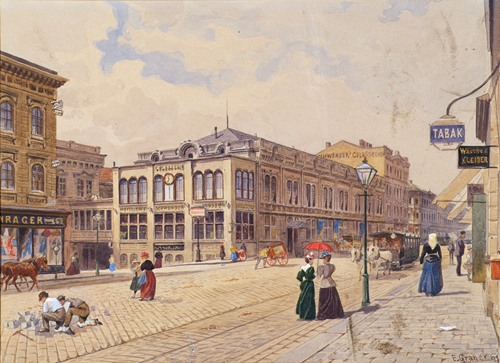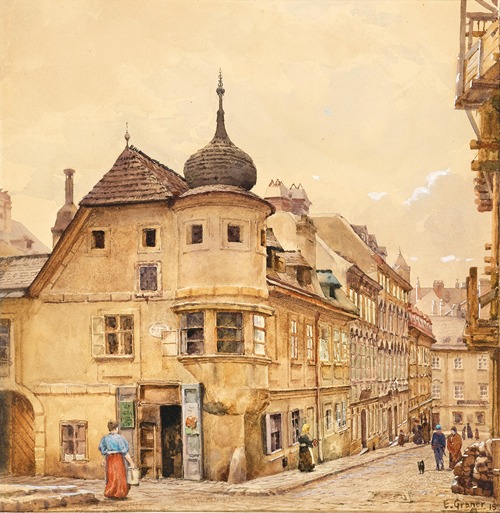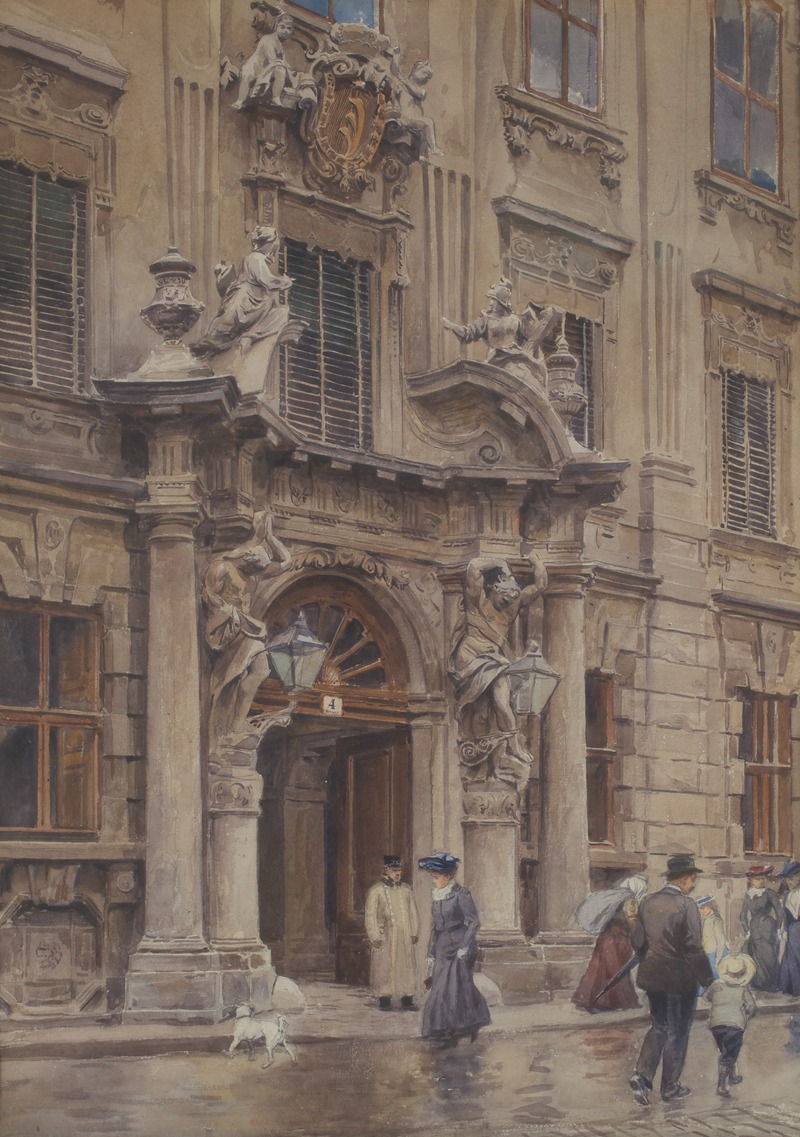
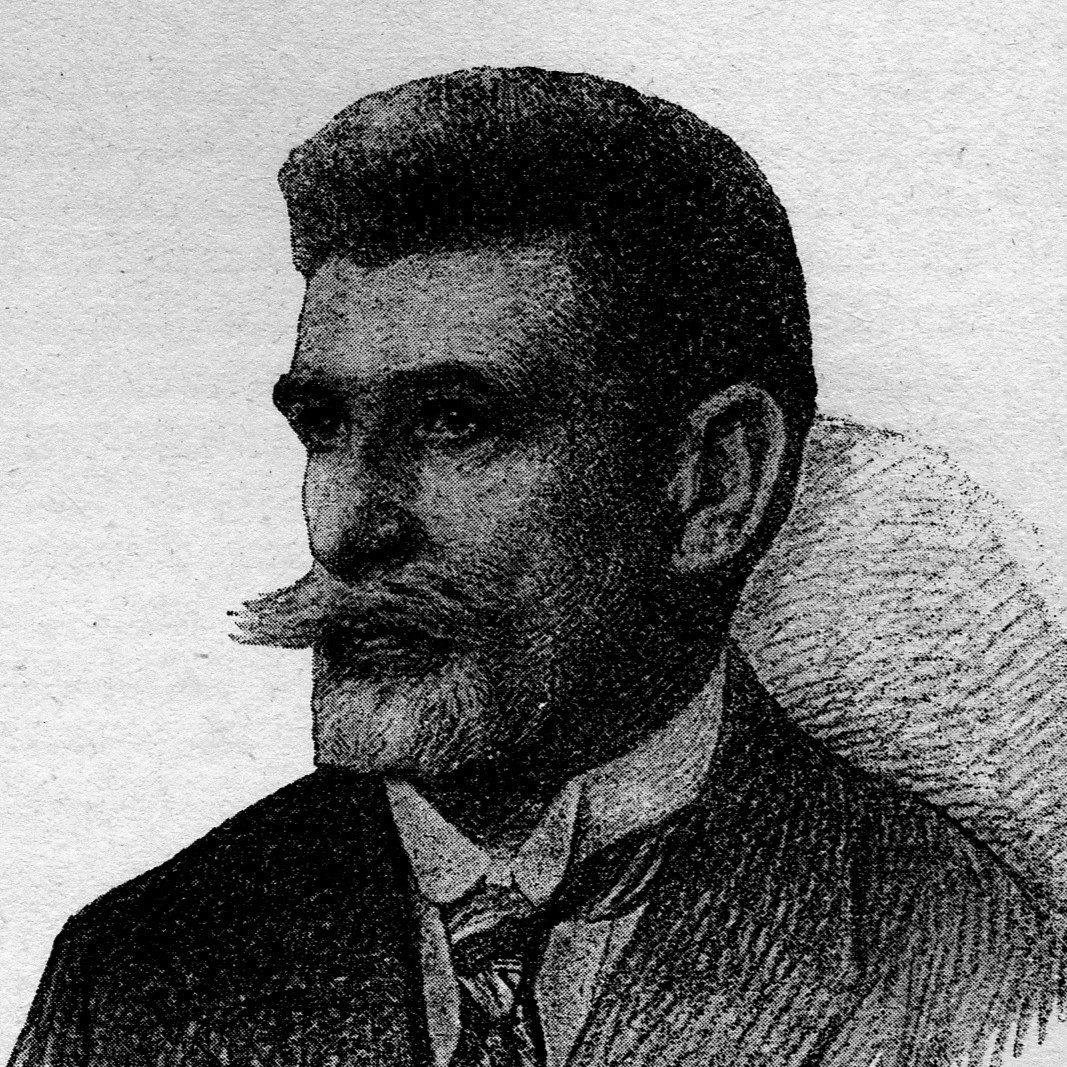
Ernst Graner was an Austrian watercolorist.
He studied at the Vienna Academy under Eduard von Lichtenfels and exhibited landscape paintings at Viennese exhibitions from 1890 onwards.
Graner is considered one of the most important Viennese watercolorists of his time. His numerous watercolors show views with rich staffages of Vienna, especially the Hofburg and Schönbrunn Palace with exits of Emperor Franz Joseph. Some of the buildings depicted no longer exist, such as the Vienna Rotunda, the Philipphof or the Vienna City Theater. In his early years, Graner also painted genre scenes.
Graner was married to Maria Kastler, the daughter of a hammersmith from Klam (Klamschlucht) and lived there from time to time. The portrait of Maria in the gorge bears the features of his wife. A fresco painted by him at the hammer mill in the Klamschlucht gorge on the August Strindbergweg-Klamschlucht cultural hiking trail shows his father-in-law at work. He was buried in an honorary grave at the Vienna Central Cemetery.
In 1961, Granergasse in Vienna-Liesing (23rd district) was named after him.
